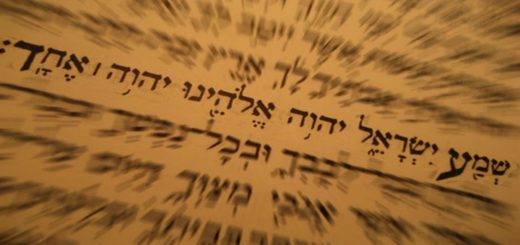Discovering homosexuality in the Bible and the ancient Near East
Text by Alessandra del Varco-Refo group Milan
Roemer and Bonjour, authors of "Homosexuality in the Bible and in the ancient Near East"(Claudiana, 2007, 144 pages) examine the texts and traditions of the Mesopotamian, Egyptian and Palestinian area starting from the IV millennium BC, focusing on how sexuality lived, in general and homosexuality, in particular .
In Mesopotamia
The Sumerians and Accadi, pantheists and polytheists, recognize the principles of nature in the gods, men with powers and amplified abilities. The goddess Ishtar, linked to the art of war and that of love, a symbol of fertility and pleasure, embodies all the facets of sexuality, except maternity, associated with the mother goddess.
His cult provides for sacred prostitution, both feminine and male (the so -called "assinnu" or "dogs" because they are faithful to their master).
Sexual practices are not regulated by moral judgments, but by social roles: Ishtar's prostitutes and prostitutes are integrated into society, but to the lowest steps and take on a passive sexual role. Those who have relationships with them belong instead to a higher social class and are expected to have an active role.
There are prayers to encourage love, both homosexual and heterosexual, but there are no explicit references to female homosexual practices, as well as those of the multifaceted Ishtar.
The contemporary ketite laws condemn the rape towards another man and the incest: even if fragmented, they seem more oriented to the conservation of social status, rather than prescribing of sexual behavior. In fact, the free man who escapes the marital duties to submit to another man is condemned, while he accepts without problems that he has relationships with a prostitute, without compromising his own social role.
Here the epic of Gilgamesh was born, which the authors later face, in parallel to the biblical story of Davide and Jonatan.
In Egypt
Sexuality is part of the search for balance and the maintenance of the life force within the ordering intelligence, presided over by the goddess Maat. There is a goddess of love, Hathor, but she is represented as a symbol of fertility and not of pleasure, often depicted together with phallic symbols or the male partner Bes: a figure equivalent to Ishtar, with an eclectic sexuality and role, is missing.
Around 2000 BC. C. the myth of the sexual relationship between Horus and Seth is handed down, perhaps characterized by an attempted rape by the latter, perhaps a gesture of oppression, rather than of affection or pleasure. The act, foiled by Horus, who manages to escape, is however essentially perpetrated with the intervention of his mother Isis, who serves Seth's seed in Horus' meal, who is inseminated with it. But here, in fact, it is a question of the struggle for the birthright and not of sex or love.
The "Book of the Dead", widespread in the tombs of the most illustrious citizens, expresses concern for a woman who dreams of having relations with another woman, together with other bizarre premonitions in our eyes, such as the one that the dream of having relations with a ibis indicates luck, while with other types of birds it indicates bad luck.
For man, the testimonies are contradictory: on the one hand, the Book of the Dead includes among the negative confessions, i.e. the acts that one declares not to have committed to overcome the tests of the afterlife, that of "not having been a pederast" together with other actions considered evil, on the other hand, inscriptions are found on a 24th century BC tomb of two high officials with clear references to their emotional bond and their intimate relationship and, on a register which speaks of the contemporary pharaoh Pepi II, of the man's relationship with his general Sisene.
In summary: homosexuality probably had a private space in ancient Egypt, as following the principles dictated by the ordering intelligence of the goddess Maat could not, for a man, ignore taking a wife and having children. Nonetheless, relationships between men stood alongside official ones, sometimes equaling them in emotional importance, even without social recognition.
In the BIBLE
The premise is that the biblical authors rarely address the issue of homosexual relationships and never for its own sake, whether in Genesis or Leviticus.
1. Leviticus
Homosexuality is condemned in some passages of Leviticus together with incest and other practices concerning the sexual sphere; the same practices are, however, accepted elsewhere, as in the story of Lot and his daughters or that of Jacob marrying two sisters. However, masturbation is not mentioned, nor female homosexuality
One passage examined speaks of Ham who "sees his father's nakedness", a statement that can be interpreted literally (Ham sees his father naked) or in translation, that is, that Ham has relations with his father or mother.
According to the authors, the most correct interpretation seems to be the reference to a son's modesty towards his father and not to any homosexual and/or incestuous acts.
In Deuteronomy, it is declared that there were no men or women dedicated to prostitution among the children of Israel and that such acts are despised by God: however, the reference seems to be to the abolition, in the cult of YHVH, of the sacred prostitution practiced by the Assyrians and not to homosexual practices.
But the most important episode is reported in Leviticus 18 and 20, which expressly indicates the prohibition of relationships between two men as an "abominable thing", a concept also expressed in the subsequent rabbinic "Code of Holiness".
The verb translated as “to have intercourse” is the equivalent of “to use” and a more appropriate translation would be: “you shall not use a man as you use a woman, it is an abominable thing”. The expression completely changes its meaning, in fact if a woman can be "used" for pleasure purposes because she is "inferior" to a man, it is an abomination to put a man on the same level.
Speaking generically of sexuality in the Bible, the authors show that the "celibacy" of Yhvh is peculiar of modern exegetes: tomb inscriptions of the VIII century. to. C. Cite of Yhvh and his bride Ashera. Subsequently, following the division of the Jewish kingdom and the Babylonian slavery, the need arose to unify the Jewish creed in a monotheistic faith, both to differentiate itself from the polytheism of others, and to give a sense of unity to the dispersed people.
Faith was therefore spread in a single benign, transcendent and asexual divinity, so as not to associate it with equally divine family members, opposed to a malicious antagonist figure, exactly as had happened in Egypt with the figures of Horus and Seth (of whose Name, Satan is a linguistic variant, editor's note).
2. Genesis
The story of Sodoma and Gomorra is the one mainly mentioned by the Christian component who sides against homosexuality. The narrative deals with the well -known story of the two angels who arrive in the city with the prospect of spending the night outdoors. Lot hosts them at home with every courtesy, but, at night some citizens knock on the door of the master house, asking to "get to know" the guests. Lot takes care of protecting the angels and proposes their daughters to the patrons "who have not known a man".
Quarrels and escalation of violence follow, ending with Lot's escape with his family following the destruction of the city by YHVH. Lot's wife dies on the way and he takes care of personally "getting to know" his daughters to give continuity to the lineage.
Two emerging details: incest, elsewhere considered an abomination (Leviticus), is not condemned and the violence of Lot's fellow citizens is evident not only from the intention to abuse non-consenting men, but also from the blind fury with which they defend the arrogance of control to the detriment of one of the most sacred duties, that of hospitality.
As for sexual abuse towards women, the authors cite an episode from Judges, 19, less known, but with similar dynamics: a Levite priest arrives with his concubine in the city of Gibeah and is hosted by a local inhabitant.
At night, some customers ask the host to "get to know him", but he protects the guest, giving them the latter's concubine and proposing his own virgin daughter as a possible addition.
The customers abuse the Levite's woman until they kill her and the Levite, in the morning, leaves taking the body away.
The analogy between the stories is surprising, yet the story of Gibeah is never referred to as an example of a prescription for homosexual practices, but rather as an explicit condemnation of the lack of hospitality towards others.
3. David and Jonathan (1st Book of Samuel)
The story of the protagonists is located in that of the legitimacy of the kingdom of Israel within the complex books of Samuele, whose different fragments still make the exegetes discuss.
Samuele consecrates initially Saul as the first king of Israel, but the latter is subsequently rejected by Yhvh himself in favor of David: immediately there are dynastic struggles, which will unfold, between chronicle and legend, in attempts of deceptions, violence And a final separation.
Davide and Jonatan's report is described in the "story of Davide's ascent": the two young people get to know the end of a battle and, immediately, settles a strong and intimate relationship.
Jonatan undresses his clothes, a sign of his rank, and gives them to Davide, a sign of recognition in the latter of the true king, which at least unusual.
But the agreement between the two goes beyond the esteem and mutual devotion and is characterized by verbs indicating both love in a broad sense, and attachment and desire. Saul, who initially welcomes Davide like a son, then acquires the awareness that the young stranger is destined to occupy the throne of Israel and confides to Jonatan the intention to kill him.
Then discovered the strong bond of his son with Davide, he gives in to the insults with epithets who have sexual connotations, but also political: the main, "son of Isai", indicates the alleged dynastic fidelity of Jonatan to Davide instead of his father.
It further induces to think of a love relationship that, spiritually and physically, the so -called "Elegy of David" also cross the friendship: the latter, learning the death of Jonatan and Saul during a battle, declares, among other things : "(...) Your love for me was more wonderful than women's love (...) and asks others to cry Saul to allow him to dedicate their pain solely to Davide.
Davide and Jonatan were not however a homosexual couple as we would understand it in our day: they were both married, according to the dictates of the laws, but lived a bond that did not go into contrast with their marriages, on the contrary, completed their affectivity, similarly To two other characters of ancient Middle Eastern literature: Gilgamesh and Enkidu.
Gilgamesh and Enkidu (Gilgamesh epic)
The original contents of the epic (III Millennio BC), initially consisted of fragmented stories in the Babylonian language, translated into Sumerian and collected in the library of nineteous about a millennium later.
Gilgamesh, king of Uruk (in the current Irak) around the 19th century BC. C., is characterized as a demigod and his biography is dotted with supernatural aspects and events.
Tyrannical king, more than the average, beautiful and prestente, with thirst for glory and insatiable sexual appetites against men and women: this is the portrait of Gilgamesh, whose unlimited energy risks destroying his human subjects.
The gods welcome their complaints, giving Gilgamesh a worthy counterpart: Enkidu. The goddess Aruru creates it starting from a lump of clay planted in a forest; once he grows up, he is initiated into culture and sexuality by a prostitute and then introduced to Uruk.
Gilgamesh is warned of the imminent meeting with Enkidu by the premonitory dream of lying next to a double axe, interpreted by his mother's words: "(...) Gilgamesh, the ax you saw is the man you loved, as if it were a woman and you gently caressed it (…). Because I will do it just like you."
Subsequently, the two meet in a fight and become inseparable. Together they perform heroic feats aimed at ensuring immortality among men, until Ishtar falls in love with Gilgamesh and, rejected by the latter, causes Enkidu's death.
Gilgamesh desperately searches for a remedy that will bring his lost companion back to life; when he discovers that he can never achieve immortality, he returns to Uruk to experience human suffering and joy and to face what he has left to live.
The plot could initially suggest that Enkidu is a figure instrumental to the satisfaction of Gilgamesh's ego; during the narrative, however, it is discovered that the figures were created to be complementary, just like Adam and Eve and that even Enkidu's death has the "divine" purpose of educating Gilgamesh in the only thing he lacked: compassion.
Comparisons
The authors examine the analogies and differences in history, underlined in two main points. The first is that the emotional bond between Davide and Jonatan is one of the elements of the story, perhaps not even the main and the narration is inscribed on the dynastic succession; In the epic of Gilgamesh, the relationship of the protagonists is instead the fulcrum of the story.
The second is that, even if both relationships developed between fighters of equal value, Gilgamesh and Enkidu have been created as the same and their relationship is not only accepted, but encouraged, while Prince Jonatan becomes small in front of the unknown Davide to recognize him Like the real king and their relationship is hindered by Saul and his family.
The main analogy is instead the dynamics of the beginning and end of the relationship: the divinity gives a special friend to the prince, as in the events of Achille and Patroclo, Adriano and Antinoo, Alessandro and Hephaestation, who is missing for reasons attributable to the divine .
Last, but not less important, the strengthening of the affective bond by the survivor after the death of the partner, as if the protagonist, abandoned by the beloved in human guise, was enriched with the spirit of the latter and reached the lighting towards a wider sense of life.
The New Testament
Jesus teaches that the law of Moses must always be reinterpreted and that no one deserves condemnation, as not even those who express it are without sin, but he never makes any mention of homosexuality, nor does he ever explicitly approve or disapprove of emotional relationships between men.
However, the Apostle Paul talks about it in Romans I - 24,27, condemning men who "leaving the natural relationship with the woman, have become inflamed in their lust for one another, committing infamous acts with men".
The Greek word used for "nature" is "physis", or "genetic or biological law" and the expression "against nature" implies the departure from what was considered the immutable natural order of things and the social uncontrollability of individuals who did not conform to expected roles and not only in the area of sexuality.
However, the interpretation that Paul did not condemn "natural" homosexuals, limiting himself to judging those who posed as such, even though they were not, appears forced and implausible.
In the first letter to the Corinthians 6.9, Paul rails against the unjust who will not inherit the kingdom of God, including "effeminate and pederasts", which he also mentions in Timothy 1.10. The authors' perplexity, in this case, is of a linguistic nature: the term we know as "effeminate" is a translation from the Greek "malakos", that is, "sweet, delicate", if referring for example to an object, but also "weak of character”, if attributed to a man.
For translated, it could also, but not exclusively, be applied to the "passive" partner of a homosexual relationship with defined roles.
The term "pederasta" is instead the translation of "Arseno-Koites", that is, "who lies with men", referable to any sexual behavior not socially acceptable, such as promiscuity or prostitution, regardless of the kind of those who practice it.
The attribution of the definition to the active partner of a homosexual couple is clearly "pulled for the hair". Paul himself, moreover, points out that in Christ there is no more difference between human beings, of any origin and culture they are (Galati 3.8) and refers to the ownership of the judgment only to God.
Conclusions
The interpretation of the Old or New Testament to condemn or legitimize homosexuality is, according to the authors, a forcing that does not respect the context in which the texts have been drawn up, nor the spirit of the message that at the time wanted to transmit .
It is therefore not possible to pretend to derive meanings valid in our day by applying every word that we find on texts, sacred for Christians and in any case of historical value also for practitioners of other faiths, but conceived for an era that had knowledge, priorities and values different from ours; It can only be found that homosexuality is an integral part of human nature regardless of the historical period.
The central spirit of the divine message, net of speculation, is therefore well represented by the passage taken from the Gospel of Luke 6.37: "Judge not and you will not be judged, do not condemn and you will not be condemned".
T. Romer – L Bonjour, Homosexuality in the Bible and in the ancient Near East, Claudiana, Turin 2007, pages. 144






